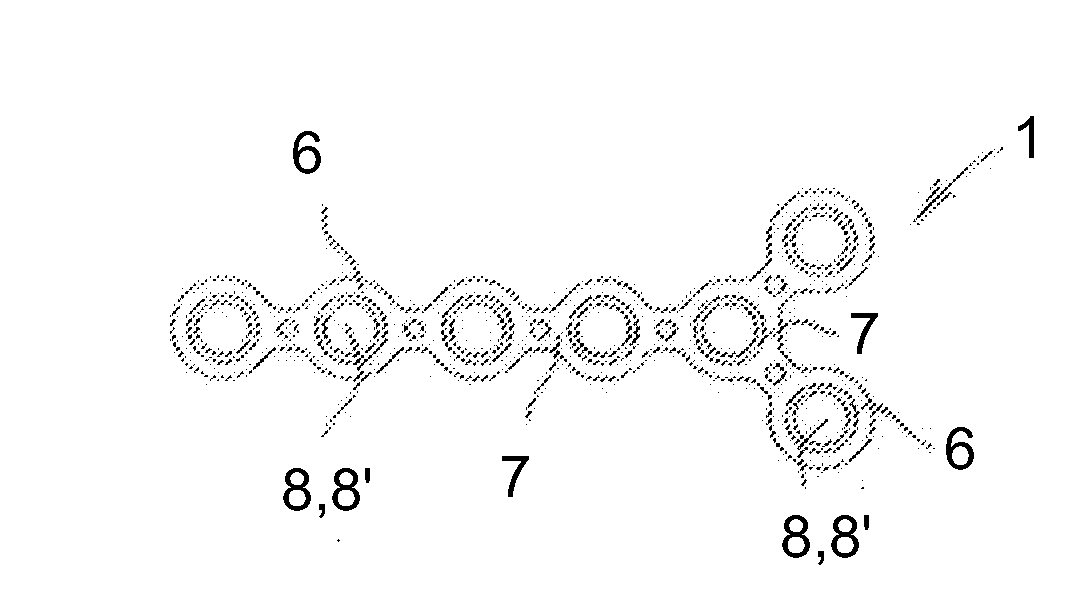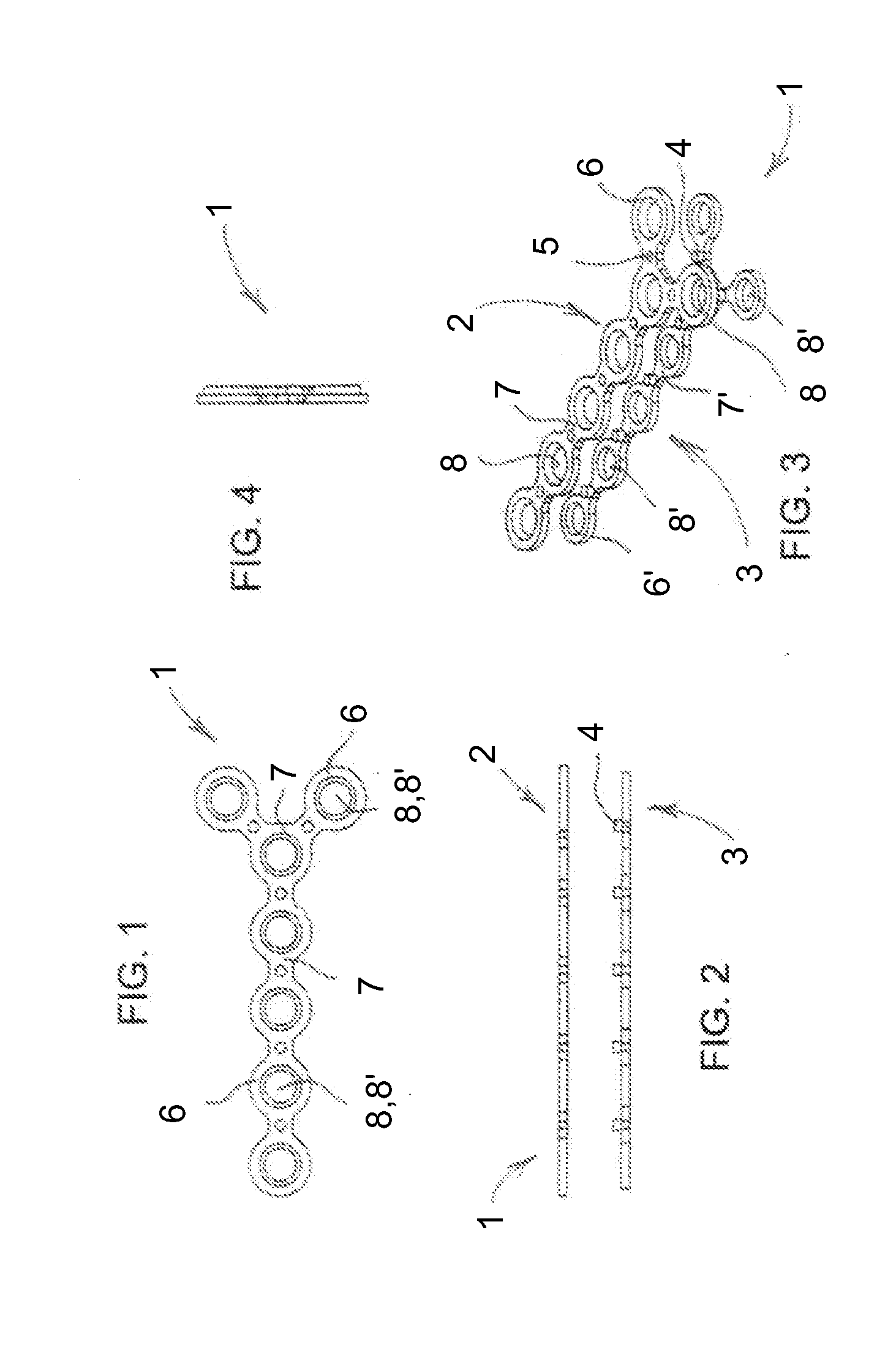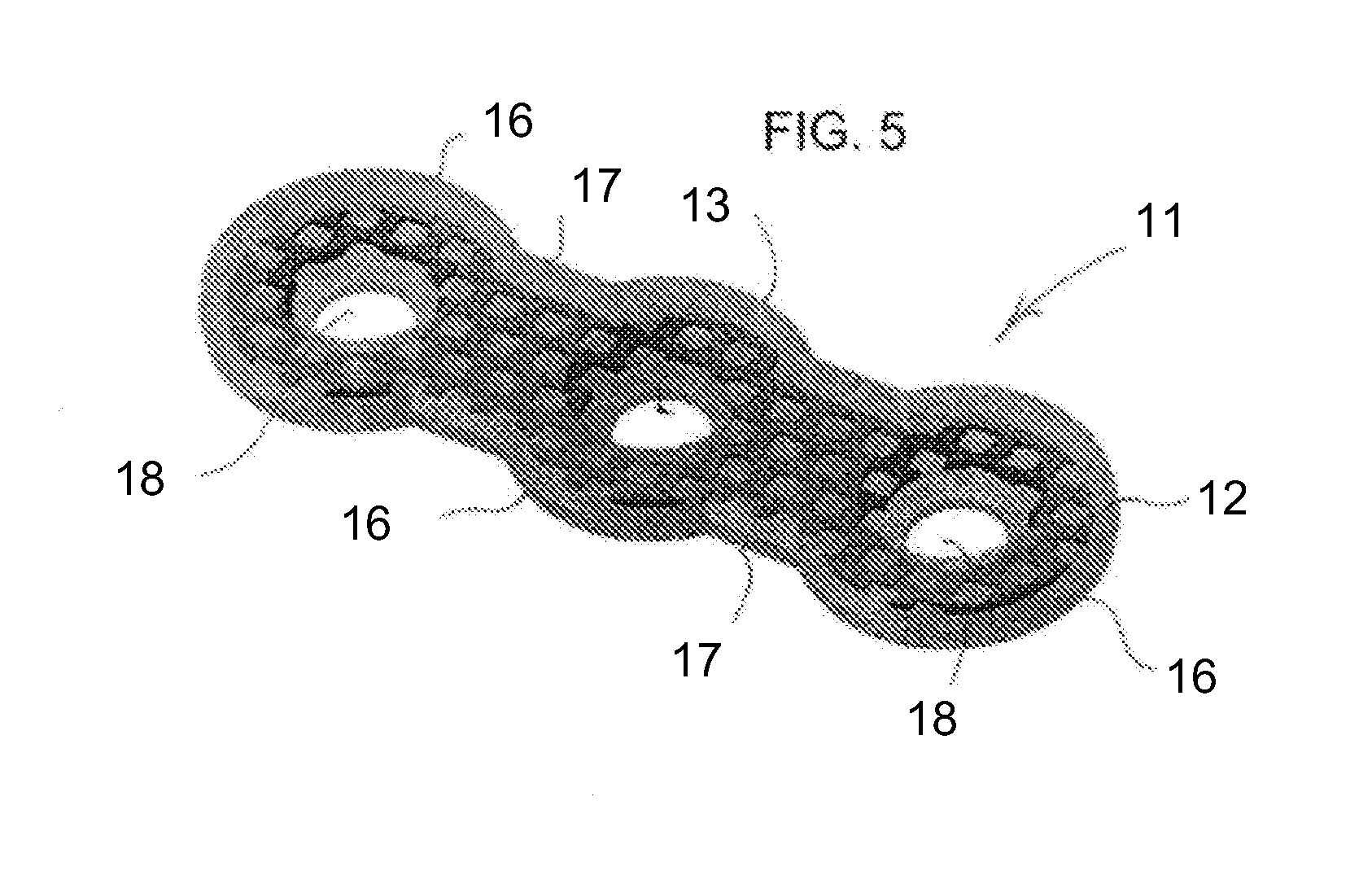Hybrid Orthopedic Implant
a hybrid and orthopedic technology, applied in the field of hybrid orthopedic implants, can solve the problems of difficult intraoperatively shaping plastic implants by bending or twisting, difficult for surgeons to cut, or shave, so as to avoid the disadvantages of tendon irritation, improve the effect of elasticity and strength, and prevent the effect of tendon irritation
- Summary
- Abstract
- Description
- Claims
- Application Information
AI Technical Summary
Benefits of technology
Problems solved by technology
Method used
Image
Examples
first embodiment
[0036]Referring now to the figures of the drawing in detail and first, particularly, to FIG. 1 thereof, there is seen a hybrid orthopedic plate 1 according to the invention. It may be seen from FIGS. 2, 3 and 4 that the plate 1 has a body with a metal skeleton 2 and a plastic layer 3. Bosses 4 protruding from the plastic layer 3 are snapped or otherwise secured in corresponding holes 5 in the metal skeleton 2 in order to lock the elements 2, 3 together, as seen in FIGS. 1 and 4. The metal skeleton 2 has nodes 6, internodes or webs 7 between the nodes 6 and holes 8 passing through the nodes 6. The plastic layer 3 has nodes 6′, internodes or webs 7′ between the nodes 6′ and holes 8′ passing through the nodes 6′. Each pair of holes 8, 8′ receive one screw to be screwed into a bone and, preferably, self-tap in angle-stable position into one or both the metal skeleton 2 and the plastic layer 3 for holding the screws affixed to the plate and the plate affixed to the bone. The plate 1 may ...
third embodiment
[0038]a hybrid plate 21 is illustrated in FIGS. 6-9. The plate 21 has a body with a trabecular or foam metal core or skeleton 22, for instance titanium, and a plastic layer 23, for instance PEEK, covering the metal core 22. Once again, as in the first two embodiments, the hybrid plate 21 has nodes 26, internodes or webs 27 and holes 28 in the nodes for receiving screws. The hybrid plate 21 may have any of the shapes mentioned above and may additionally include perforations or holes through the core 22, to facilitate intraoperative bending of the plate 21. In the embodiment show in FIG. 7 the perforations are roughly circular in cross-section, although other cross-sectional shapes and / or amorphous cross-sections can be used.
fourth embodiment
[0039]a hybrid plate 31 is illustrated in FIGS. 10-13. The hybrid plate 31 has a body with a metal core or skeleton 32, for example titanium, and a plastic layer 33, made, for example of PEEK, covering the metal core 32. The hybrid plate 31 has a head portion 36, a neck portion 37, a shaft portion 39 and holes 38 in the head and shaft portion for receiving screws. The metal core or skeleton 32 may include tines 32′ at the distal edge of the head portion to facilitate differential bending or shaping of the head portion of the plate by engaging one or more bending tools into engagement holes 32″ and exercising torque.
PUM
 Login to View More
Login to View More Abstract
Description
Claims
Application Information
 Login to View More
Login to View More - R&D
- Intellectual Property
- Life Sciences
- Materials
- Tech Scout
- Unparalleled Data Quality
- Higher Quality Content
- 60% Fewer Hallucinations
Browse by: Latest US Patents, China's latest patents, Technical Efficacy Thesaurus, Application Domain, Technology Topic, Popular Technical Reports.
© 2025 PatSnap. All rights reserved.Legal|Privacy policy|Modern Slavery Act Transparency Statement|Sitemap|About US| Contact US: help@patsnap.com



